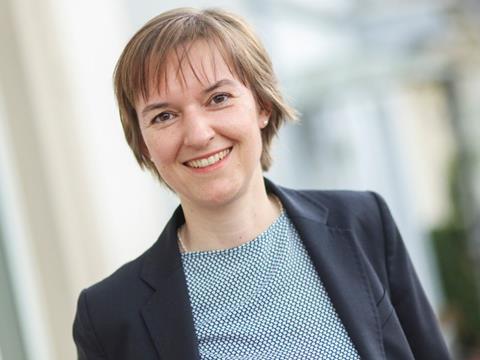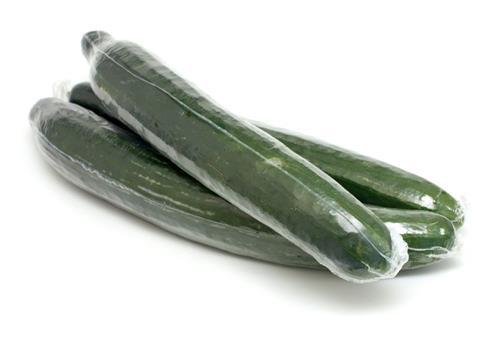
It has been a challenging period for the plastics packaging industry with difficult market conditions and the ongoing 'war on plastics' having an effect. On the eve of K 2019, Elisabeth Skoda caught up with Dr Isabell Schmidt, managing director at the IK Industrievereinigung Kunststoffverpackungen e.V., the German association for plastics packaging and films, and found out how the situation looks from the perspective of the German plastics packaging industry.
The recent years have brought a lot of change and more stringent regulations for the plastics packaging industry both in Germany and across the EU. We ask Dr Schmidt how this has affected IK members. Are they well prepared for the coming changes?
“The German Packaging Law and its quotas mainly affects packaging manufacturers that bring packs into circulation, who now have to register with a centralised authority. Our members are mostly affected by the German Packaging Law’s paragraph 21, which requires packaging design for recycling, recyclability as well as the use of recyclates and renewable materials,” she explains.
Recyclability is of course a big topic in the industry. IK has been working on this over the last three years, and there is now healthy competition on the market. Many manufacturers who previously manufactured products that were considered to not be recyclable now offer alternatives, for example for composite layer films.
“However, recyclability comes with disadvantages for converters, such as additional cost, additional thickness and the question of whether a material will run on a particular machine. The companies buying the films at the end of the day decide what prevails in the market,” Dr Schmidt adds.
Recyclability vs plastics reduction
Plastics has been on the receiving end of some bad press in recent years, but the attempt to avoid plastics has sometimes come at the detriment of recyclability, as Dr Schmidt explains.
“In politics, there is a desire for a more circular economy, i.e. better recyclability and higher recycling quotas as well the use of more recyclate in packaging. But there is a trend that goes in the opposite, and in my opinion, wrong, direction. There are now several fiber-plastics composites available on the market, such as trays for minced meat. The consumer is supposed to separate the plastic and fiber parts, but this isn’t always possible, or if it is, does not always happen. In addition, that type of packaging is often heavier, which is also questionable from a carbon footprint perspective.”
She identifies a kneejerk ‘anti-plastic’ sentiment due to negative press as the cause of this.
“The German government has a five-step plan, which includes more recycling and the use of less plastic. Less plastic seems to be an easier sell than recyclability. The effect of paragraph 21 of the packaging law seems not to be strong enough to counterbalance this. A desire for less or no plastic has taken over and this sends out the wrong signal and actually isn’t of any benefit to the environment.”
IK has been working hard to highlight the benefits of plastics packaging and to debunk some of the most common myths, and their work is starting to show an effect.
"We have noticed that reporting is becoming more differentiated. I recently saw a report in the FAZ (Frankfurter Allgemeine Zeitung) headlined ‘That’s how good plastics is’, and even the German tabloid Bild had a front page explaining that a cotton bag emitted 313 times more CO2 than a plastic bag. Perception within the media is beginning to change. Perception by the general public can still be described as negative, so the tide has not turned yet," Dr Schmidt says.
Better quality recyclate
The European Strategy for Plastics has set a target to use ten million tonnes of recycled plastics in the EU by 2025. This includes all plastics, not just packaging. In this context, IK has set itself the ambitious aim to reuse one million tonnes of plastic packaging.
"We see potential especially in the area of industrial packaging, as there are obviously restrictions on recyclate allowed for food contact," Dr Schmidt says.
There are several challenges to overcome, as she points out.
"Hurdles are recyclate quality and quality fluctuations – one batch might fulfil the necessary criteria, and the next one won’t. Managing that is a big challenge. More has to happen in the recycling sector to address this, as packaging applications are more demanding than construction or the agricultural sector. Colour and smell also play a big role. There are procedures available to improve this, but this means extra effort and cost, which doesn’t improve the CO2 balance, and increases the recyclate price.”
The difference in price between recyclate and virgin material is a big issue, and Dr Schmidt thinks the ability to influence that would be beneficial.
“There are discussions in Germany about taxing CO2 emissions. Doing this across various industries would have the advantage of reducing the price difference between recyclate and virgin materials. In Germany, recyclers also often have to pay the renewable energy levy as they use a lot of energy. Balancing this would be an important first step. Marking products as containing recyclate could also help, so that consumers can easily recognise it as the more environmentally friendly choice. Binding recycling quotas should be treated with care. It involves a lot of bureaucratic effort, and there is a danger that recyclates will be diverted to applications within the quota, so it is a questionable method."
Eco design guidelines
The public generally has a vague concept of what good eco design means. When asked, one person might highlight recyclability, the other the CO2 balance, and a third one may talk about organic produce.
"We were keen to focus on thinking deeper with regards to eco design – what is it and what is involved? It cannot be narrowed down to just one thing. Our eco design guideline shows the entire bandwidth and helps to integrate eco design into packaging development. This means thinking about a strategy, starting from company goals and brand image. Companies have to think about what is most important to them, whether it’s CO2, recyclability or resource efficiency. Based on that they can formulate concrete goals for packaging and measure them in terms that are relevant to them, for example material use, Co2 and recyclability. With our check lists and toolbox, we are not reinventing the wheel but we are guiding users round existing tools," says Dr Schmidt.
The ‘unpackaged’ trend

In recent months, an increasing number of supermarkets and grocery stores have started to offer their products with little or no packaging. What does a plastics packaging association think of this?
"I think that on principle it is a positive thing that shops are thinking about this and using their creativity, and it makes consumers think about their habits. It makes them aware that packaging design starts a lot earlier in the supply chain and makes them think about what distribution method is good for what product. Our IK guideline also states that. For example, toothpaste doesn’t necessarily have to be delivered in the shape of paste, it could also be presented in the shape of tablets," Dr Schmidt points out.
She is keen to highlight that it makes sense to package as little as possible but enough to avoid product waste. This varies for different products and situations. She uses the classic example of a cucumber wrapped in plastics to illustrate.
"Wrapping cucumbers in plastic prolongs shelf life and saves food waste, especially in the winter months, when it is imported from Spain. However, during the summer, when the cucumber is sourced locally, maybe it is not necessary to wrap it in plastic, and an unpackaged cucumber is best."
It is important to package smart, and it depends on the product as to what packaging is best, Dr Schmidt adds.
"With beef, its carbon footprint is so high that it is worth avoiding even the smallest bit of waste with packaging. Making sustainability just about ‘no plastics’ doesn’t work. That is oversimplifying things too much. However, in my experience, owners of these ‘unpackaged’ shops think a lot about sustainability in the supply chain, the problem sometimes lies with their customers and ‘followers’ who lack that differentiated view. Plastics can often be considered taboo in the industry, but they don’t have a problem with single-use glass despite its carbon footprint being higher."
She highlights the importance of differentiated thinking and using packaging in a smart way.
"I would like the sustainability debate to be less ideologically tinted and more open to different arguments. This can then create innovation that thinks outside the box, such as toothpaste in tablet shape. It’s also important to promote breadth and regional products. It’s important to advise consumers to buy products that make sense for them – best to buy something maybe a bit more heavily packaged when it can reduce food waste.”




















